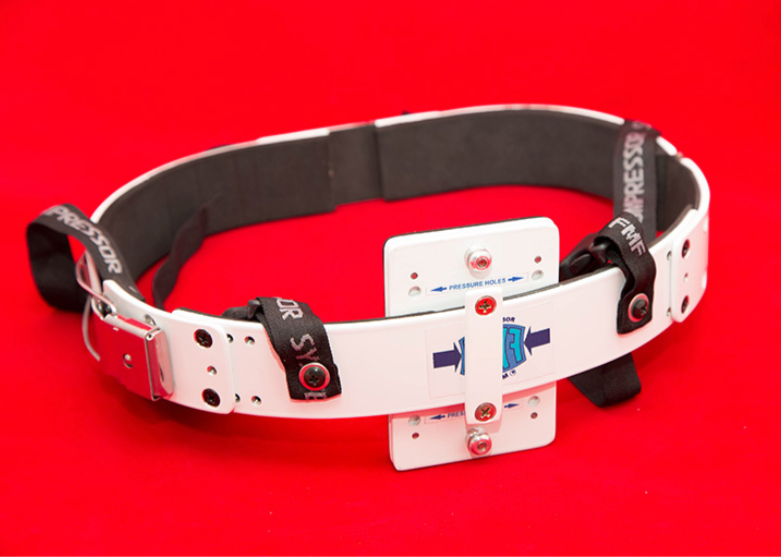Non-surgical treatment of pectus carinatum with the FMF Dynamic Compressor System

| Abstract. |
Pectus carinatum is a chest wall deformity, sometimes associated with physical signs and symptoms, but always associated to significant psychological distress. Surgical correction used to be the only solution, and was therefore only indicated for the most severe cases.
Non-surgical approaches have been developed and improved during the last 15–20 years. A paradigm shift occurred when the medical community realized that, despite the wall deformity, the chest wall was not completely rigid, but exible and capable of remodeling. Several bracing devices and protocols are available as of today.
This article focuses specifically in the FMF® Dynamic Compressor System (DCS), which was developed in Argentina in 2001 and is currently used worldwide.
| Introduction |
Pectus carinatum is a deformity of the anterior chest wall. Two subtypes have been described: the chondrogladiolar variant, which comprises up to 95% of the cases, and presents with protrusion of the sternal body, and the chondromanubrial variant, showing protrusion of the superior component of the sternum (manubrium).
Pectus carinatum goes far beyond a simple aesthetical problem. It can be responsible of physical signs and symptoms and also has significant psychological impact. Defects tend to worsen during pubertal growth spurts and even during adult life.
Recent evidence shows that these patients are at risk for a disturbed body image and reduced quality of life (1) and many patients refer feelings of discomfort, shame, shyness, anxiety, anguish, and even depression, which can lead to social isolation.
Chest pain or discomfort, especially when lying in prone position, intolerance to physical exercise, scoliosis, impaired shoulders and kyphotic position are some of the physical signs and symptoms.
Since cardio-respiratory disorders are very rare, and if present, mild in intensity, surgical reconstruction was traditionally indicated only to correct the most severe cases of pectus carinatum, leaving the vast majority of the patients undertreated.
Although surgery improves the chest’s shape and patients are satis ed with the results, surgery always leaves a visible scar behind and unfortunately cannot correct the aring of ribs or completely remodel the thorax.
Several non-surgical approaches have been proposed for pectus carinatum patients (2-8) and during the mid 2000s, when non-operative approaches began to consolidate, major surgery was the only option.
In this article we will address the FMF® Dynamic Compressor System (DCS), which was co-created in Argentina by the author (MFM) and his partner, Dr. Carlos Fraire (9-11) in 2001 and is extensively used worldwide today.
Between years 2008 and 2013, teams led by Dr. Manuel Lopez from the Unit of Chest Wall Deformities at the University Hospital of Saint Etienne in France (12) and Dr. Robert E. Kelly from the Eastern Virginia Medical School, Children’s Hospital of The Kings Daughters in Norfolk, USA (13) have been able to validate the Argentine experience with the FMF® DCS in their own patient populations. They have also concluded that this brace is an effective and minimally invasive tool for treatment of pectus carinatum.
jovs-02-57Non-surgical treatment of pectus carinatum with the FMF® Dynamic Compressor System, Marcelo Martinez-Ferro, Gaston Bellia Munzon, Carlos Fraire, Constanza Abdenur, Emilio Chinni, Bruno Strappa, Laura Ardigo. The Journal of Visualized Surgery; March 2016
